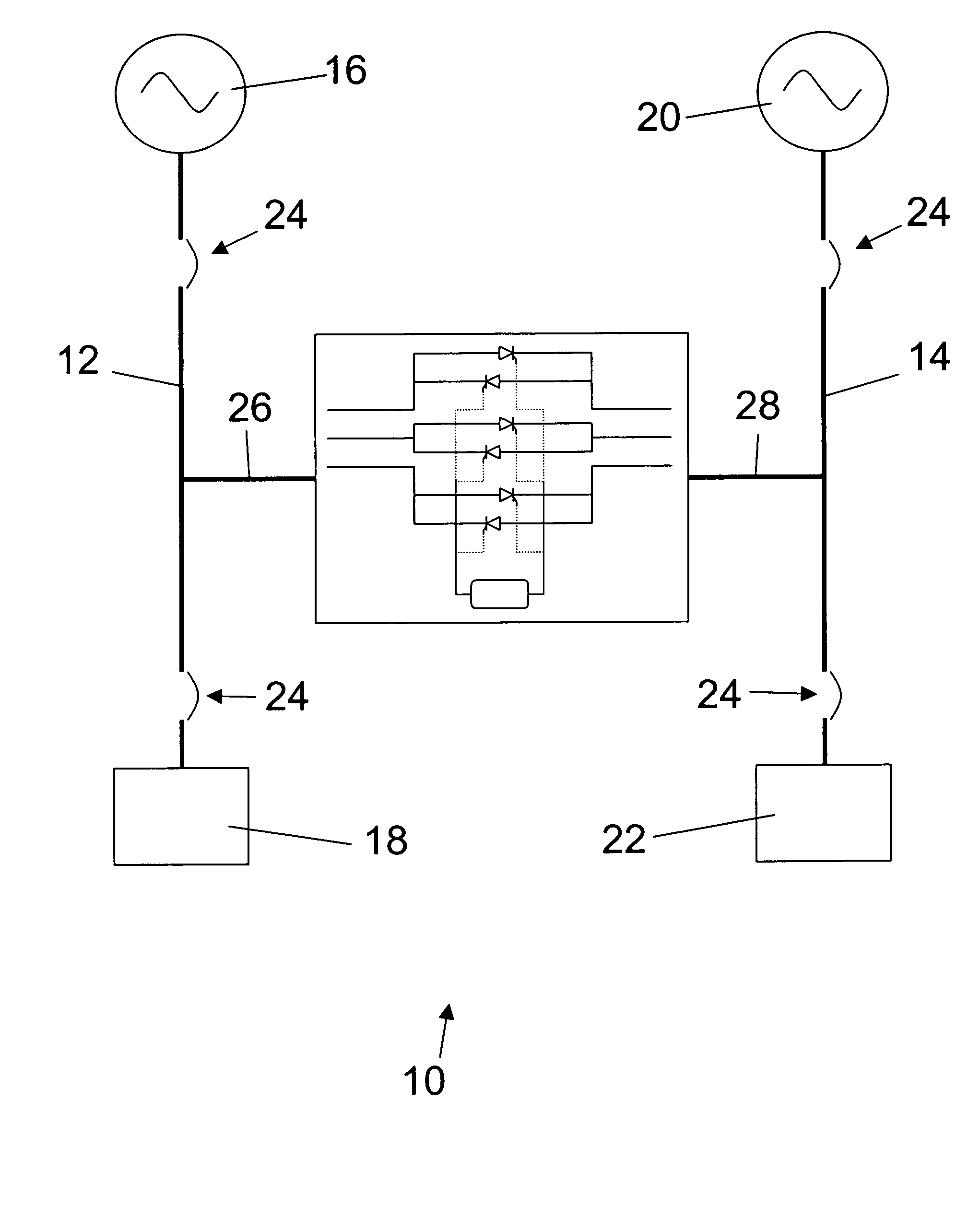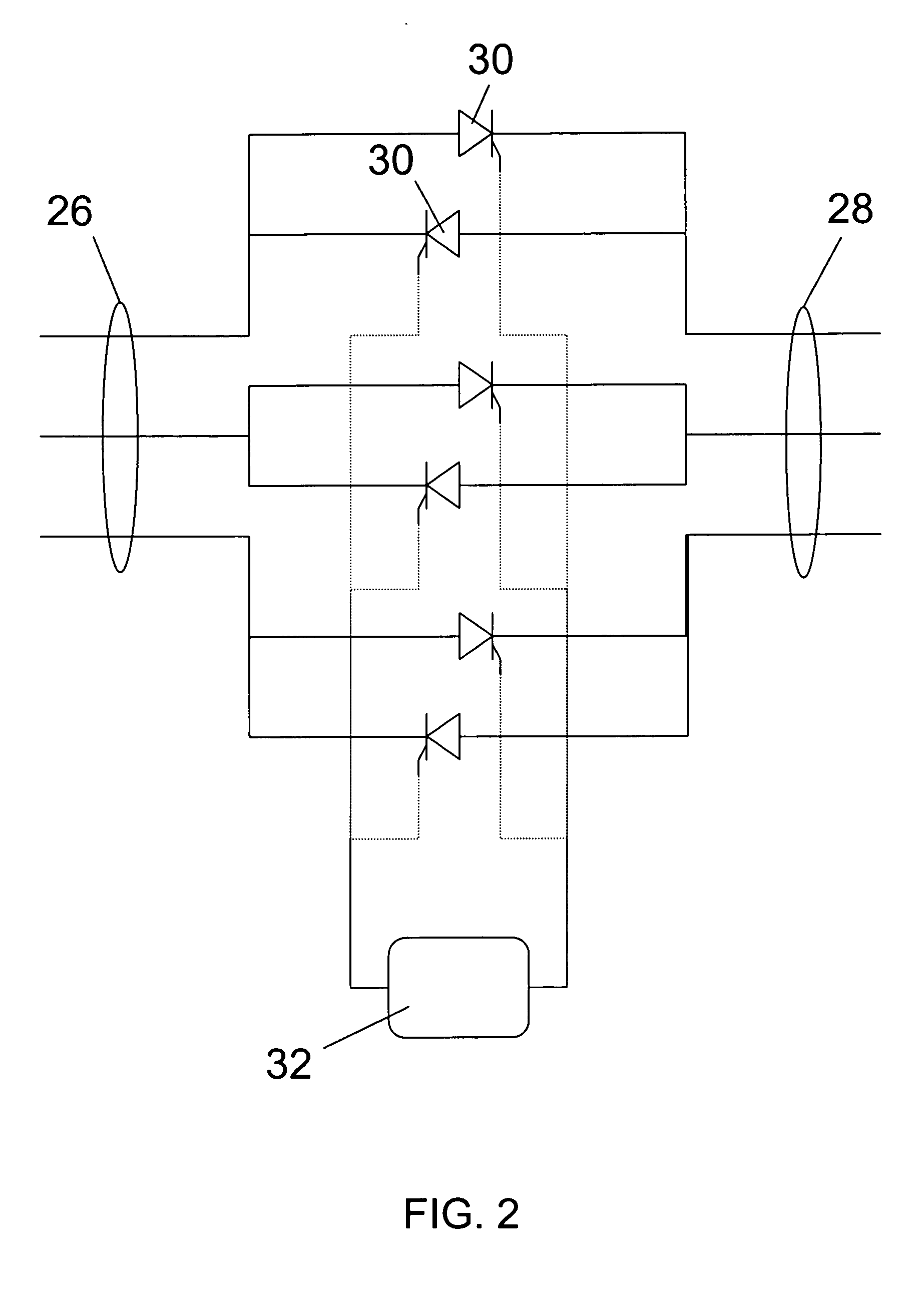Dual bus static tie switch
- Summary
- Abstract
- Description
- Claims
- Application Information
AI Technical Summary
Benefits of technology
Problems solved by technology
Method used
Image
Examples
first embodiment
[0022] Referring to FIG. 1, the preferred static tie switch 10 constructed in accordance with a preferred first embodiment of the present invention is illustrated connected between a first and second bus 12,14. The first bus 12 connects a first power source 16 to a first load 18, thereby allowing the first source 16 to directly power the first load 18 under normal operating conditions. Similarly, the second bus 14 connects a second power source 20 to a second load 22, thereby allowing the second source 20 to directly power the second load 22 under normal operating conditions. The buses 12,14 may include circuit breakers 24 operable to isolate any one or more of the sources 16,20 and loads 18,22. During other than normal operations, such as an abnormal event or routine maintenance, one of the sources 16,20 may shut down or need to be shut down. In response to this situation, the switch 10 of the present invention allows both of the loads 18,22 to be powered by either one of the sourc...
second embodiment
[0028] In a preferred second embodiment, as shown in FIG. 3, the switch 10 essentially includes the buses 12,14 and circuit breakers 24 as an integrated package, such that the sources 16,18 and loads 20,22 are connected directly to the switch 10. With all of these components integrated into the switch 10, the switch 10 may include first and second inputs 34,36 and first and second outputs 38,40. In this case, the controller 32 preferably has some control over the circuit breakers 24, such that the controller 32 may open any one or more of the circuit breakers 24 in order to isolate any one or more of the sources 16,20 and / or loads 18,22. Thus, the controller 32 can effectively instantly control power flow from the sources 16,20 and to the loads 18,22. The controller 32 may also include breaker indicators to indicate each circuit breaker's 24 status.
[0029] As shown in FIG. 4, the switch 10 may also include a first and second bypass 42,44 in order to provide for maintenance or replace...
PUM
 Login to View More
Login to View More Abstract
Description
Claims
Application Information
 Login to View More
Login to View More - R&D
- Intellectual Property
- Life Sciences
- Materials
- Tech Scout
- Unparalleled Data Quality
- Higher Quality Content
- 60% Fewer Hallucinations
Browse by: Latest US Patents, China's latest patents, Technical Efficacy Thesaurus, Application Domain, Technology Topic, Popular Technical Reports.
© 2025 PatSnap. All rights reserved.Legal|Privacy policy|Modern Slavery Act Transparency Statement|Sitemap|About US| Contact US: help@patsnap.com



